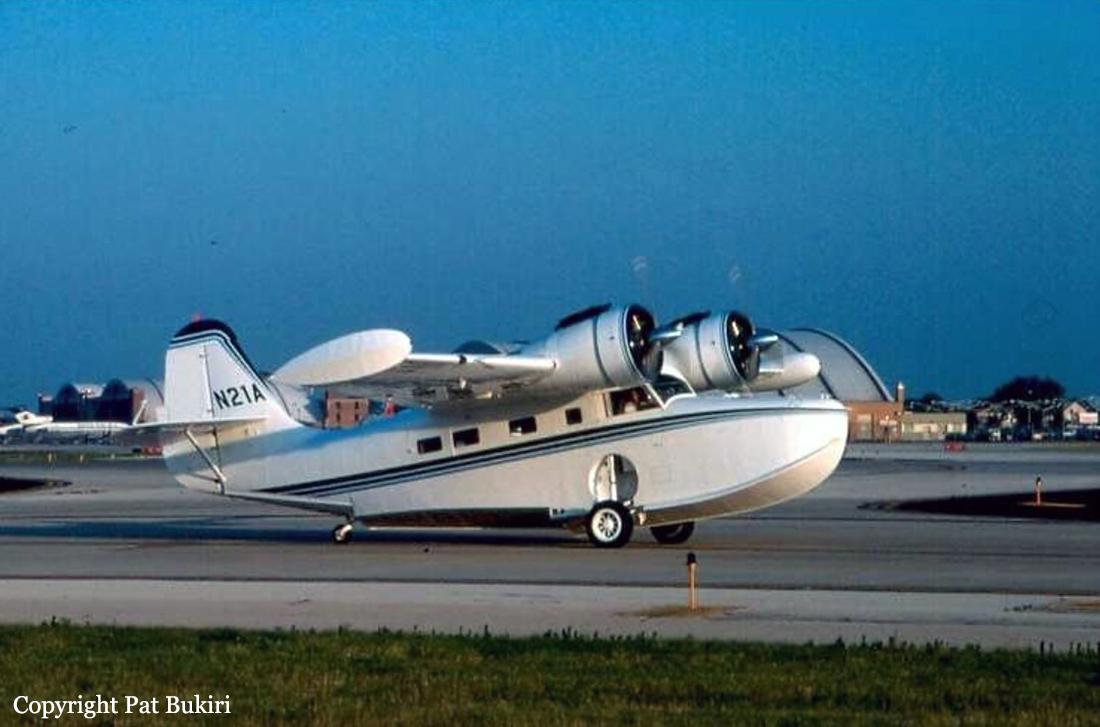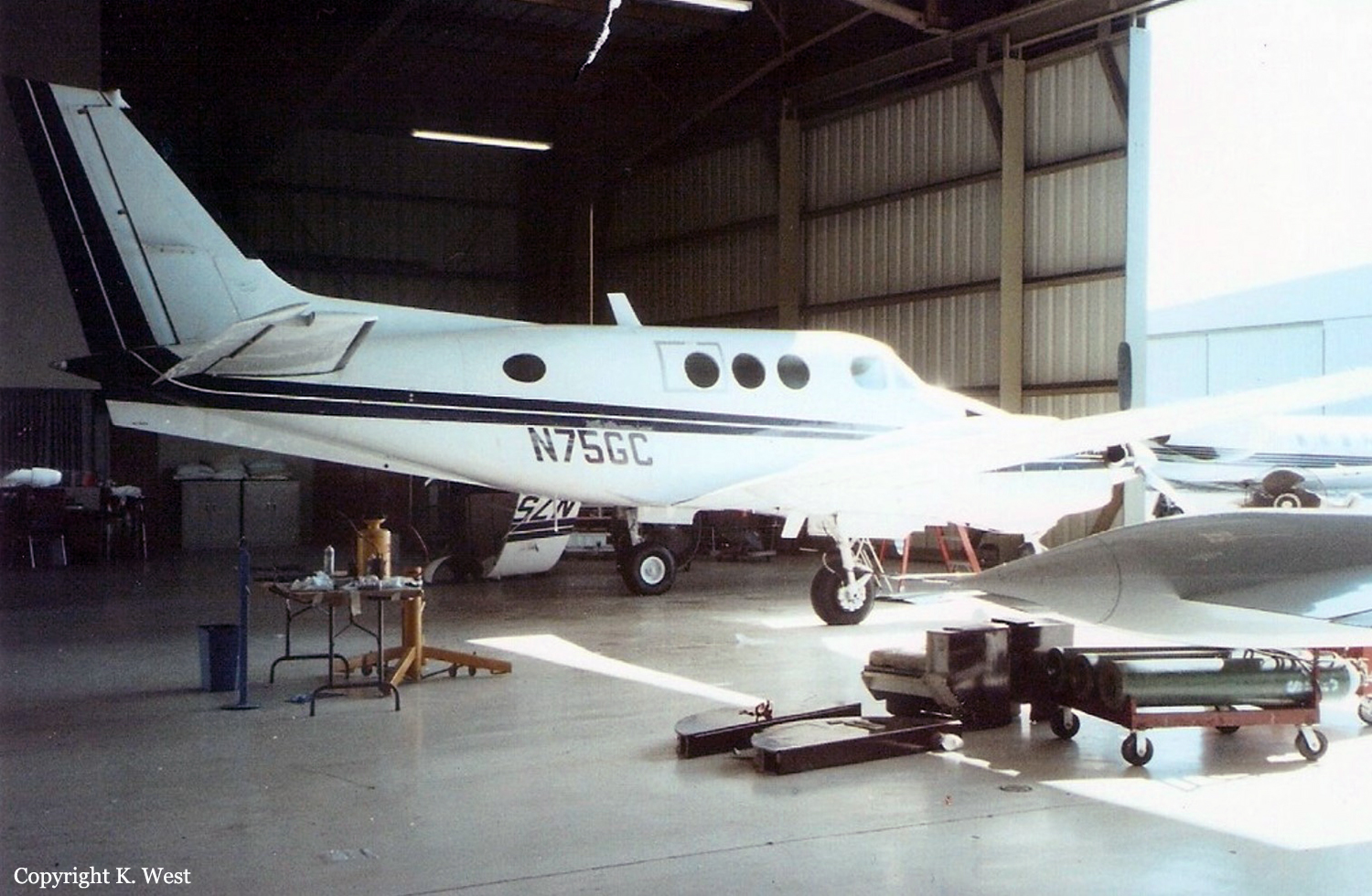Zone
Crash of a Grumman G-21A Goose off Marathon
Date & Time:
Jan 29, 2008 at 1723 LT
Registration:
N21A
Survivors:
Yes
Schedule:
Marathon - Marathon
MSN:
B129
YOM:
1946
Crew on board:
1
Crew fatalities:
Pax on board:
1
Pax fatalities:
Other fatalities:
Total fatalities:
0
Captain / Total hours on type:
100.00
Aircraft flight hours:
24456
Circumstances:
On January 29, 2008, about 1723 eastern standard time, a Grumman G-21A, amphibian airplane N21A, impacted the ocean during landing near Marathon, Florida. The certificated airline transport pilot and passenger received serious injuries and the airplane sustained substantial damage. The flight was operated as a personal flight under the provisions of 14 Code of Federal Regulations (CFR) Part 91, and no flight plan was filed. Visual meteorological conditions prevailed at the time of the accident. The flight departed from the Florida Keys Marathon Airport (MTH) in Marathon, Florida, on January 29, 2008, about 1615. According to the pilot he departed MTH and after take off and the checklist accomplished he proceeded in a westerly direction to inspect a water-work area. The pilot stated that other then that, he had no further recollection of the flight. According to the Federal Aviation Administration (FAA) the passenger stated that the pilot was practicing takeoffs and landings. During a water landing, the left wing contacted the water and the airplane water looped. A Good Samaritan rescued them from the water in his boat and brought them ashore where rescue personal were waiting. Examination of the airplane by the FAA revealed no mechanical malfunctions or failures of the airplane or engine, and none were reported by the pilot or passenger.
Probable cause:
The pilot’s failure to maintain control of the airplane during a water landing.
Final Report:

Crash of a Cessna 421B Golden Eagle II in Marathon
Date & Time:
May 8, 2006 at 0800 LT
Registration:
N988GM
Survivors:
Yes
Schedule:
Pompano Beach - Marathon
MSN:
421B-0535
YOM:
1973
Crew on board:
2
Crew fatalities:
Pax on board:
0
Pax fatalities:
Other fatalities:
Total fatalities:
0
Aircraft flight hours:
5307
Circumstances:
The commercial certificated pilot was positioning the multi-engine, retractable landing gear airplane for a corporate passenger flight under Title 14, CFR Part 91, when the accident occurred. Upon landing at the destination, the pilot aborted the landing, and after climbing to about 100 feet agl descended, impacting in a canal. A witness who was not looking towards the runway, reported hearing the sound of a twin engine airplane approaching with the engines at reduced power, and then heard a scraping noise similar to the recent gear-up landing he had witnessed. Looking toward the runway, he said the airplane was midfield, left of the runway centerline, about 20 feet in the air with the landing gear retracted, and that he saw a cloud of dust, and heard what he thought was full engine power being applied. He said the airplane climbed to about 100 feet agl, and disappeared from view. Another witness with a portable VHF radio tuned to the unicom frequency, reported hearing the pilot say he was "doing an emergency go-around." The airplane descended striking utility poles, and impacted in a saltwater canal. An examination of the airport runway revealed a set of parallel propeller strike marks. The left and right sets of marks were 109 and 113 feet long, and the mark's center-to-center measurement is consistent with the engine centerline-to-centerline measurement for the accident airplane. No landing gear marks were observed. The airplane's six propeller blades had extensive torsional twisting and bending, as-well-as extensive chord wise scratching and abrasion. Several of the blades had fractured or missing tips. An examination of the cockpit showed the landing gear retraction/extension handle was in the up/retracted position, and the landing gear extension warning horn circuit breaker was in the pulled/tripped position. The landing gear emergency extension handle was in the stowed position. The nose landing gear was damaged during final impact, and was not functional. During the postimpact examination, both the left and right main landing gear were stowed in the up and locked/retracted position. The landing gear were released/unlocked and operated appropriately using the emergency extension handle. An examination of the left and right main landing gear showed no damage to the wheel doors, leg doors, wheels, or tires. All linkages and locking devices were undamaged, and appeared to function normally.
Probable cause:
The pilot's failure to extend the landing gear prior to landing, which resulted in the propellers striking the runway, an aborted landing, and an in-flight collision with terrain.
Final Report:
Crash of a Beechcraft C90 King Air near Homestead: 2 killed
Date & Time:
Jan 31, 2004 at 1632 LT
Registration:
N75GC
Survivors:
No
Schedule:
Marathon – Fort Lauderdale
MSN:
LJ-727
YOM:
1977
Crew on board:
1
Crew fatalities:
Pax on board:
1
Pax fatalities:
Other fatalities:
Total fatalities:
2
Captain / Total hours on type:
200.00
Aircraft flight hours:
8208
Circumstances:
The instrument rated pilot received three weather briefings on the date of the accident from the Miami Automated Flight Service Station. The pilot obtained his IFR clearance while airborne, was advised to climb to 9000 feet mean sea level (MSL), then later advised to descend and maintain 2000 feet, and to fly heading 030 degrees. Radar data indicates that following the instruction from the controller, the airplane made a right descending turn to a southeasterly heading, followed by a left turn to an easterly heading where the airplane was lost from radar while at 2,200 feet mean sea level. The crash was located 138 degrees and .38 nautical mile from the last radar target. Between 1631:04, and 1631:16, the airplane descended from 7,600 to 6,100 feet. Between 1631:16, and the last radar target 12 seconds later at 1631:28, the airplane descended 3,900 feet. Weather radar data indicates the airplane encountered video integrator and processor (VIP) Level 2, or "moderate intensity" echoes in the area of the in-flight loss of control. Approximately 10 and 20 miles east-northeast through southeast of the accident site, maximum echoes of VIP Level 5 to 6, or "intends to extreme intensity" echoes were noted. The strongest reflectivities were located 20 miles east of the accident site. Disintegration of the airplane was noted; there was no evidence of in-flight, or post crash fire of any recovered components. The full span of the left wing, left aileron, left horizontal, and left elevator were accounted for. A section of the right wing and right outboard flap was identified; the right wing was fragmented. Examination of the engine and propellers revealed no evidence of preimpact failure or malfunction. No determination was made whether the pilot met the instrument recency of experience requirement of 14 CFR Part 61.57 (c).
Probable cause:
The pilot's inadequate in-flight planning/decision which resulted in an encounter with rain showers and turbulence, a loss of aircraft control, and overstress of the airframe.
Final Report:
